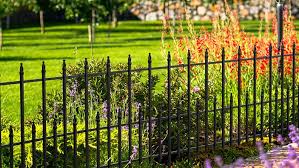Beyond their functional benefits, fences hold substantial symbolic relevance in community. As actual obstacles that delineate restrictions, fences signify notions of acquisition, personal identity, and sociable norms. Let’s explore the further that means behind fences (ploty) and realise why they are crucial in shaping human interaction and scenery.
1. Possession and Boundaries:
Fences serve as concrete marker pens of management, demarcating where by a single residence stops and another will begin. This delineation of limitations is not just about actual room but in addition about asserting manage and sovereignty over one’s site. Fences signify feelings of management and belonging, delivering people with a real reflection of the proper rights and responsibilities.
2. Cultural Relevance:
In numerous cultures, fences keep deep societal relevance and are imbued with meaning that reflects societal values and norms. As an example, in certain communities, fences are noticed as symbols of exclusivity and elitism, separating the haves through the have-nots. On the other hand, in more communal cultures, fences can be much more porous, symbolizing openness and inclusivity. Comprehending the ethnic framework of fences allows us to value their symbolic importance in numerous societies.
3. Interpersonal Divisions and Inclusion:
Fences also can signify societal divisions and exclusions in areas. High surfaces and limitations can signify segregation and inequality, creating bodily barriers that individual people based on school, race, or ethnicity. On the other hand, fences with open up gateways and reduced wall surfaces represent inclusivity and interconnection, appealing connections and fostering feelings of local community. The design and style and exposure of fences can thus represent underlying societal dynamics and energy structures.
4. Environmental Influence:
The proliferation of fences has enviromentally friendly consequences, specifically in countryside landscapes. Comprehensive fencing can fragment habitats and disrupt animals corridors, influencing biodiversity and ecosystem well being. Nevertheless, eco-warm and friendly fencing options, for example wild animals-helpful patterns and permeable boundaries, supply options that balance human being requires with enviromentally friendly preservation. By minimizing their enviromentally friendly footprint, fences can bring about the preservation of all-natural countryside and animals environments.
5. Ancient Legacy:
All through record, fences have played out important jobs in shaping human being communities and countryside. From ancient fortifications to colonial enclosures, fences have been used to assert control over territory and resources. The legacy of fences is shown in literature, art, and folklore, where they represent themes of separation, confinement, and liberation. Comprehending the ancient framework of fences allows us to take pleasure in their enduring relevance in present day modern society.
To sum up, fences (ploty) are not only physical obstacles they may be icons that symbolize intricate sociable, cultural, and environmental dynamics. As guardians of borders, fences condition man interactions and scenery, highlighting and strengthening social principles and norms. Admiring the symbolic need for fences enriches our knowledge of the developed environment and our relationship with all the property.
